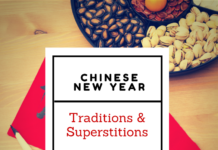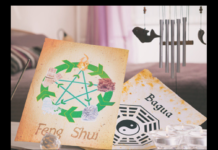The Chinese New Year, also known as the Spring Festival, is a time for celebrating new beginnings, family reunions, and good fortune. One important aspect of the celebrations is the use of lucky plants and flowers, which are believed to bring happiness, prosperity, and longevity.
What is the Chinese flower for good luck?
Orchids reign in popularity and have symbolic meaning in homes come New Year’s. Specifically, the moth orchid, or Phalaenopsis, flutters delicate petals in shades of joyful celebration. The graceful curves and unique winged shape tie phalaenopsis to the Chinese meaning for butterfly. Both represent transformation, revival after a long sleep, and lives filled with beauty. Additionally, orchids stand for fertility, as they produce thousands of diminutive seeds from each pod. Make sure to read New Years Lucky Flowers
What plant brings happiness in Chinese New Year?
Phalaenopsis Orchid, as well as Lucky Bamboo, also known as “friendship bamboo,” this plant, with its straight green stalks, signifies happiness and long-lasting friendships when given as a gift. Chrysanthemums blossoms come in cheerful colors like bright yellow, robust orange, and rich red. Their perky form evokes happiness, laughter, and positive feelings.
Plants for Chinese New Year
What plant is good for Chinese New Year? Here is our list of New Year’s lucky plants.
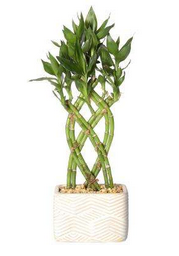
- Bamboo – Good Fortune and Happiness
Interestingly, this is not an actual bamboo plant but a type of tropical lily called Dracaena Sanderiana. The lucky bamboo plant is one of the most popular Feng Shui plants said to bring good luck and prosperity to the place where it is grown. It represents the element wood. In China, many tie a red ribbon around the plant to represent the fire element. In Chinese tradition, they also believe that how many stalks you have signifies what the plant can do for you. For example, 2 stalks represent love, 3 stalks wealth, happiness & long life, 5 stalks to bring luck in business and 10 represent completion. Tradition also states that you should keep the bamboo plant southeast to focus on wealth or east to focus on family.
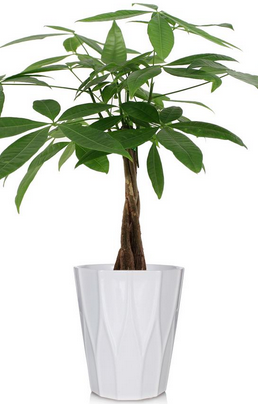
- Money Tree – Positive Energy
Pachira money trees are one of the most popular plants with holistic health and Feng Shui practitioners, who believe the plants create positive energy (“Chi” or “Qi”). The name “money tree” refers to the story of its origin, where a poor man prayed for money. He came across this odd plant, took it home as an omen, and had great fortune in selling plants grown from its seeds. In China they often braid multiple plants together to increase luck. Normally, you will see 3 or 5 plants – never 4, as that is an unlucky number for them. Frequently the plant is sold with coins or crystals.
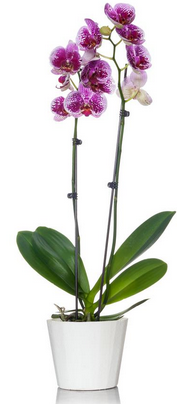
- Potted Orchid Plant – Elegance and Fertility
Orchids are known for their elegance and architectural shape. In Feng Shui practice, the orchid is mostly used to enhance love, family & fertility. Orchids absorb carbon dioxide and release oxygen at night, making them ideal for bedrooms. An orchid placed strategically in the bedroom’s relationship area or on your nightstand is said to help attract an honorable and honest romantic partner. Violet orchids are said to be the most auspicious among the many varieties of the plant. - Golden Pothos – Happiness and Prosperity
Also referred to as devil’s ivy, according to Feng-Shui, Golden Pothos plants require minimal care, so they are great for beginners. The plant has shiny heart-shaped leaves in different shades of green and has several beliefs associated with it, including that it brings luck, happiness, and prosperity.
Jade Plant – abundance and prosperity
The beautiful emerald leaves are believed to bring wealth, luck, and good fortune during the Chinese New Year. Many people like to give them as a housewarming gift, increasing the plants luck even more.
Other healthy, lush green plants such as palms, money plant, peace lily, syngoniums, anthuriums & jades can be put in wealth area (south-east) to activate financial energies and good luck. Although more suitable for outside, a tangerine or orange tree are “lucky tree bearing fruits,” and are said to bring wealth in the new year.
Lucky plants are believed to usher in abundance and good energy
Snake Plant, Rubber plant, Jade Plant, Eucalyptus and Bamboo
If you like flowers, Chinese consider Peonis to symbolize prosperity & love; Chrysanthemum associated with longevity and good health; Azaleas for happiness & prosperity; Marigold, called “wan shou jun” in Mandarin, which signifies longevity & good health; Narcissus also known as the “flower of wealth,” is another popular plant for the Chinese New Year. In ancient China, people believed that the narcissus could ward off evil spirits and bring good luck. The flower is also associated with the upcoming spring season, and its white and yellow hues are said to bring purity and innocence to the home.
As travelers interested in unique cultural traditions, Chinese New Year offers an excellent opportunity to experience centuries-old customs centered around auspicious symbols. When visiting China or Chinatowns around the world, you’ll notice vibrant red banners and decorations everywhere during this time – red represents luck, success, and general positive energy.
In addition to lucky red items, Chinese families and businesses adorn entryways and interiors with specific plants and floral arrangements. Each one has traditional meanings and backstories that add intrigue. For example, peach blossoms represent springtime renewal and romance – according to legends, an immortal goddess lives in the peach blossom forest!
As you explore festive markets and shops, you’ll find stalls bursting with flowers and mini trees heavy with tantalizing kumquats and oranges, promising sweet fortune in the coming year. Restaurant centerpieces and hotel lobbies feature clever arrangements of shoots of bamboo rising from auspicious rocks – their height and straightness convey resolute ambition.
Beyond simply admiring the festive atmosphere, you can bring a piece of good fortune home with you! Gift shops sell bamboo or “money trees” potted in red and gold cachepots and adorned with dangling coins and ribbons. Or pick up a pot of orchids, said to bless relationships with honest affection, or chrysanthemums for a long, healthy life. These classic symbols spread happiness through each Chinese New Year.
Our followers know by now that we love sharing fun traditions and superstitions from around the world, and when it comes to New Years, we thought we had covered just about everything. Over the years, we have written about New Year’s Lucky Foods, New Year’s lucky colors, lucky scents & lucky fruits. I just realized this morning that we haven’t shared a post about lucky plants, other than a quick mention in our Feng Shui good luck tips for the new year, so we are going to share some of the plants that are said to bring health, wealth, and even love. Studies have also shown that plants interact with your body, mind, and home in ways that enhance your quality of life. They energize the home by increasing oxygen flow.
Chinese New Year flowers
If you like flowers, Chinese consider Peonis to symbolize prosperity & love; Chrysanthemum for longevity & optimism; Azaleas for happiness & prosperity; Marigold, called “wan shou jun” in Mandarin, which signifies longevity & good health; Narcissus is known as Chinese sacred lilies; to ward off evil spirits but they also symbolize good fortune and prosperity; Magnolias for love & purity; Oncidium Orchids for fertility & abundance; Phalaenopsis who’s petals resemble wings of a butterfly are said to symbolize happiness, vitality & longevity; Plum Blossoms for health & long term good fortune, or the Lotus flower for perseverance, beauty & enlightenment.
In Chinese culture, the color red is associated with luck and prosperity, so it is common to see plants and flowers with red hues during the New Year. Some popular lucky plants and flowers include the peach blossom, the kumquat tree, and the narcissus.
The peach blossom, also known as the “flower of prosperity,” is a symbol of good fortune and a happy marriage. In ancient China, people believed that the goddess of love, Xi Wangmu, lived in a peach blossom forest, so the flower became associated with love and romance. The peach blossom is also a symbol of spring, and its delicate pink color is said to bring good luck to the home.
The kumquat tree is another popular plant for the Chinese New Year. Kumquats are small, oval-shaped citrus fruits that are often eaten during the New Year to symbolize wealth and good fortune. The tree itself is also considered lucky, and its bright orange fruits are believed to bring happiness and prosperity to the home.
The Chinese New Year is a time for celebrating new beginnings, and lucky plants and flowers play an important role in the celebrations. Whether you are decorating your home, giving gifts, or simply enjoying the beauty of nature, these plants and flowers are a great way to bring good luck and prosperity into your life. So whether you’re celebrating Chinese New Year at home or abroad, incorporate some lucky plants to set the stage for a fortunate year ahead! The ancient practices around these floral symbols will add mystique and wonder to your experience. Chinese New Year Lucky Desserts, Chinese New Years Lucky Foods, Feng Shui Good Luck Tips for the New Year
Looking for ways to bring more luck into your life then read our New Years posts on New Years Lucky Foods, New Years lucky colors, lucky scents & lucky fruits


